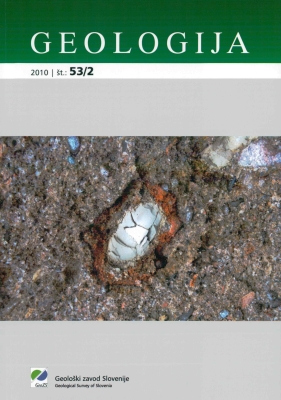Določitev koeficienta hrapavosti razpoke s 3D skenerjem
DOI:
https://doi.org/10.5474/geologija.2010.012Povzetek
Za določitev hrapavosti površine razpoke v hribini se v laboratoriju uporablja več metod. Realna hrapavost se lahko popači z uporabo različnih intervalov in merilnih metod. Pri vseh dosedanjih meritvah se pojavi mrtvi kot meritve, ki popači sliko površine razpoke. V predstavljenem članku je uporabljena nova metoda meritve hrapavosti razpok v hribini z uporabo 3D skenerja. Za predstavljeno študijo je bilo skeniranih 10 vzorcev tufa, rezultati pa so se primerjali z koeficientom hrapavosti razpoke (JRC). Do sedaj se je 3D skener večinoma uporabljal v avtomobilski industriji. Primerjava z JRC faktorjem na področju mehanike hribin, je s tem člankom predstavljena prvič. Predlagana nova metoda je hitra in bolj precizna od do sedaj uporabljenih metod, zato ima veliko možnosti, da se uveljavi tudi na področju mehanike hribin.Prenosi
Kako citirati
Fifer Bizjak, K. (2010). Določitev koeficienta hrapavosti razpoke s 3D skenerjem. Geologija, 53(2), 147–152. https://doi.org/10.5474/geologija.2010.012
Številka
Rubrika
Članki

